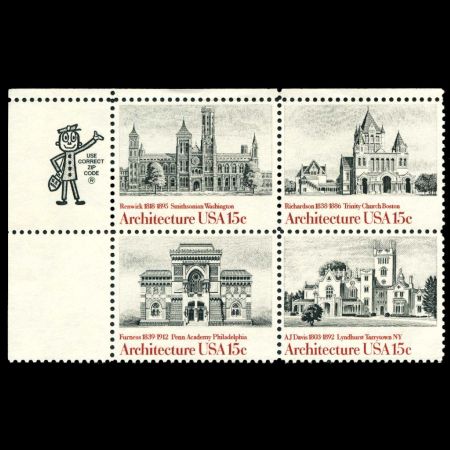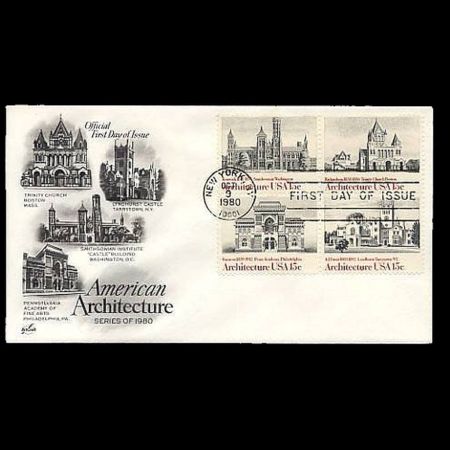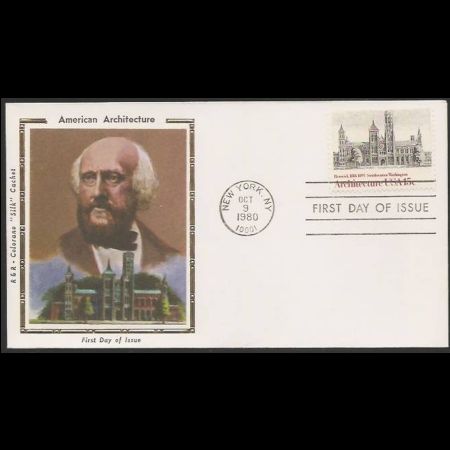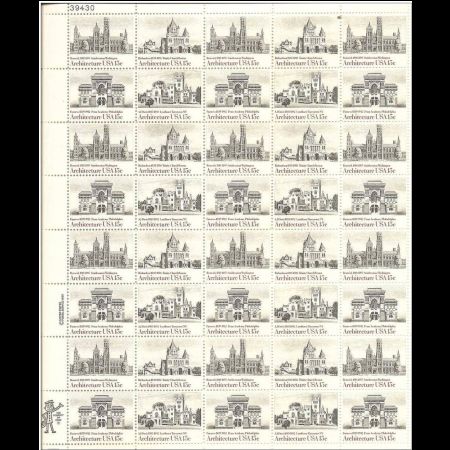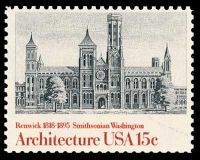"Smithsonian Institution, James
Renwick"
.
James Renwick was the architect of the Smithsonian
Institution building in Washington, DC that is
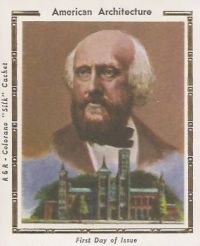 James Renwick
James Renwick
|
popularly known as "The Castle." Renwick also is known for designing
Saint Patrick's Cathedral in New York City. His other important
buildings include Grace Church in New York City; the first Corcoran
Gallery, now named the Renwick Gallery, in Washington, DC; and the Main
Hall at Vassar College, Poughkeepsie, NY.
Architect James Renwick won the competition to design the building, and
construction began in 1847. It was completed in 1855 and is
commonly called "the Castle" After more than 150 years, the institution
has grown to 19 museums, one zoo, and nine research
centers. Among the most popular are the National Postal
Museum, the Air and Space Museum, the Zoological Park, and the Museum
of Natural History.
The National Museum of Natural History (NMNH) is part of
the Smithsonian Institution, the world's preeminent museum and research
complex. The Museum is dedicated to inspiring curiosity, discovery, and
learning about the natural world through its unparalleled research,
collections, exhibitions, and education outreach programs. Opened in
1910, the green-domed museum on the National Mall was among the first
Smithsonian building constructed exclusively to house the national
collections and research facilities.
Highlights Dinosaurs; history and culture of Africa;
Janet Annenberg Hooker Hall of Geology, Gems, and Minerals; Hope
diamond; Kenneth E. Behring Family Hall of Mammals; Sant Ocean Hall;
David H. Koch Hall of Human Origins; Butterfly Pavilion
Whether looking at the history and cultures of Africa,
describing our earliest Mammalian ancestor or primate diversity around
the world, examining ancient life forms including the ever popular
dinosaurs, or exploring the beauty of rare gemstones such as uniquely
colored diamonds, the Museum's temporary and permanent exhibitions
serve to educate, enlighten and entertain millions of visitors each
year. The main building on the National Mall contains 1.5 million
square feet of space overall and 325,000 square feet of exhibition and
public space; altogether the Museum is the size of 18 football fields,
and houses over 1000 employees. With a growing network of interactive
websites, the Museum is transforming itself into a hub for national and
international electronic education, accessible to anyone with access to
the internet.
Other stamps of the set
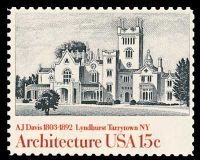
|
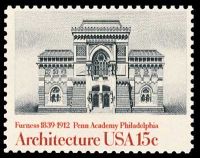
|
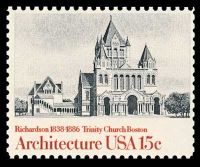
|
"Lyndhurst, Tarrytown, NY, Alexander Jackson
Davis" A designer of major public buildings and private homes,
Alexander Jackson Davis is credited with introducing the "castle" to
the Hudson River Valley. With the completion of Lyndhurst in Tarrytown,
NY on the Hudson River, came the comparison of that river to the Rhine
of Europe. Davis is known for his success with the Greek Revival style,
exemplified by the state capitol buildings which he designed for
Raleigh, NC, and Indianapolis, IN. He perhaps is known better for his
work on country houses in a sub-style of Gothic known as "picturesque."
|
"Pennsylvania Academy of Fine Arts, Frank
Furness" Frank Furness established an architectural partnership in
Philadelphia after returning from service in the Civil War. He
solidified his reputation with his design of the Pennsylvania Academy
of Fine Arts, 1872-1876, in which he fused elements of neoclassical and
Gothic revival architecture in a manner suggestive of the contemporary
French style. With that design, Furness began the transition in
American architecture from the derivative academic buildings of the
previous generation toward a more highly decorated Victorian style. His
work, which includes many private and public structures in the
Philadelphia area, had a strong effect on Louis Sullivan, the leading
architect of the next generation who worked for Furness as a draftsman. |
"Trinity Church, Boston, Henry Hobson Richardson"
Henry Hobson Richardson was one of the most innovative designers during
the latter part of the 19th century. He introduced a massive yet simple
masonry architecture, inspired by the Romanesque, for which he became
famous. Trinity Church, his most elegant religious structure, was built
according to a cruciform plan in yellow-gray granite and brownstone.
Its crossing is capped by a massive lantern, the dominant element in a
pyramidal composition modeled on Salamanca Cathedral in Spain.
Richardson said that in his work he sought "a peacefully quiet and
massive treatment of wall surfaces."
|
|
